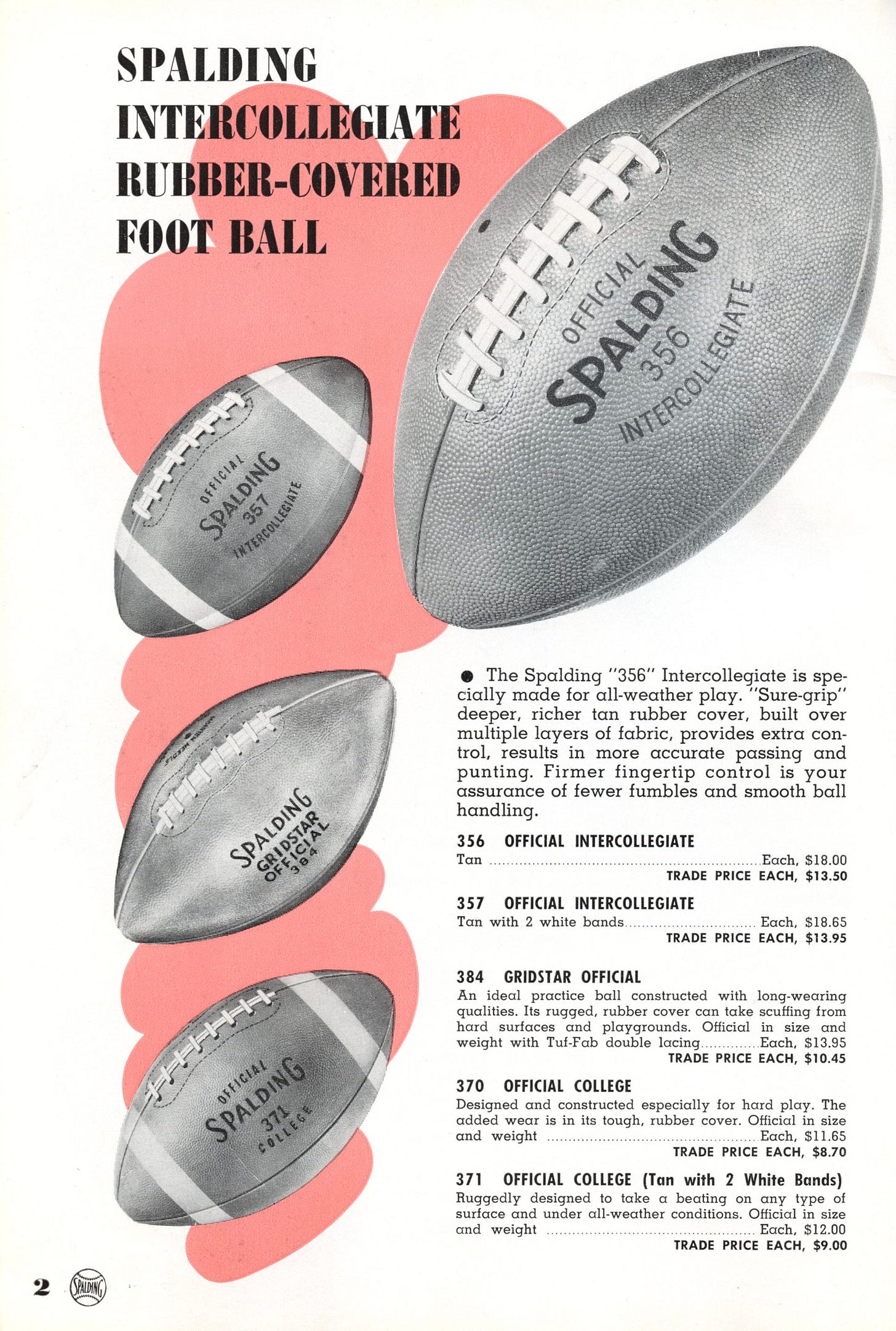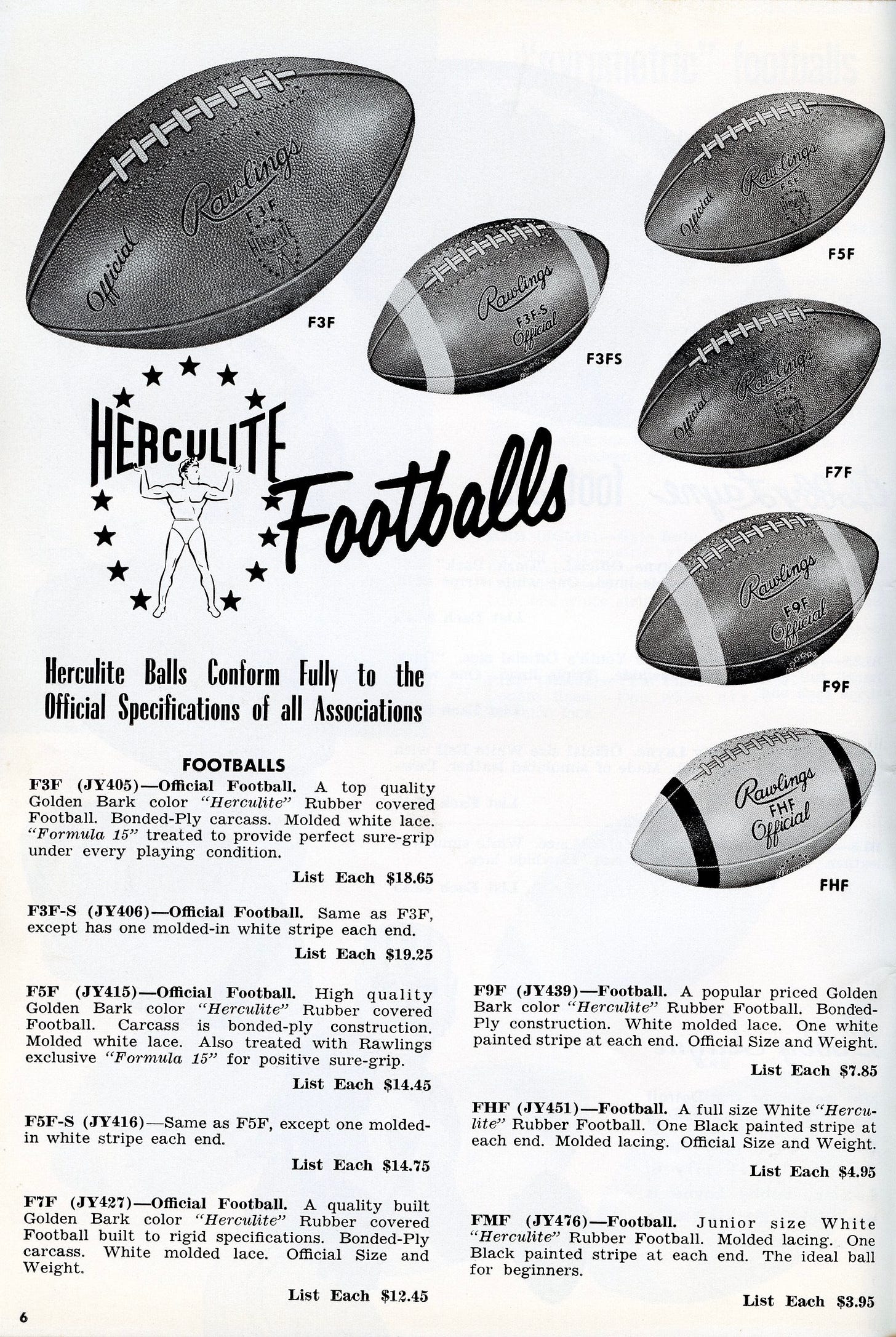Today's Tidbit... When Rubber Footballs Were All The Rage
Early folk football games occurred post-harvest using the inflated bladders of recently-slaughtered pigs. Eventually, they covered the pig bladders with cowhide, and the bladders transitioned to rubber, yet the combination continued to be called pigskins.
Internal valves allowed the ball to remain inflated longer, and the arrival of external valves in the 1920s meant they no longer had to be unlaced and relaced when reinflating them, so footballs approached perfection. However, the challenges of footballs becoming slippery when wet and losing their shape over time were unsolved.
The solution to both problems began before WWII when Voit introduced rubber footballs. Some were bladderless, while others had bladders, rubberized inner fabric linings, and cooked rubber covers with pebbling similar to their rawhide cousins. The initial reaction to these balls in the mainstream football world is unknown, and the onset of WWII led to a shortage of rubber until synthetic versions became available. That allowed rubber footballs to see use in recreational football settings, including military training camps.
Following the war, rubber football manufacturers became more aggressive in marketing the balls and promoting their use in test games, such as a 1950 AAFC exhibition game, and by then, they were already approved for use by the Oregon high school association, where rainy games are frequent.
The NHSF conducted nationwide tests in 1950, a rubber ball saw use in the 1950 LSU-Georgia Tech game, and the NCAA approved the use of rubber balls in 1952, provided both teams agreed to its use. Generally, rubber balls allowed better grip, which runners, passers, and pass catchers preferred, but kickers believed they came off the foot differently than leather balls. At that point, some predicted rubber balls would replace leather balls entirely.

By 1956, the NCAA allowed the rubber ball's use if either team chose to use one, partly because they were comparable in performance but lasted longer, bringing cost savings for lower-budget programs
From that point, tracing the relative usage of rubber balls becomes difficult, but they appear to have remained in use as an alternative ball in wet conditions, with some using them only for practice. For example, Frank Broyles' Arkansas team intended to use rubber balls while practicing for the 1966 Cotton Bowl if conditions required.
Rubber footballs remained in use into the 1980s, as confirmed by Mike Semcheski, who reached out to me after reading a recent Tidbit about the 1959 Lehigh-Lafayette game that was followed by a riot between opposing fans. Mike played in that game, later becoming a Big East football official. Before a 1983 UConn-UNH game played in a downpour, UConn's coach, Tom Jackson, asked if he could supply six leather and six rubber balls for use. The officials allowed UConn to use the combination of balls but would not intentionally manage the type of ball used for a given down.
Soon after that, the NCAA switched directions and allowed only footballs made of leather, so while the rubber balls may have appeared in practices from time to time, they disappeared from games and have never returned.
Football Archaeology is reader-supported. Click here to buy one of my books or otherwise support the site.




